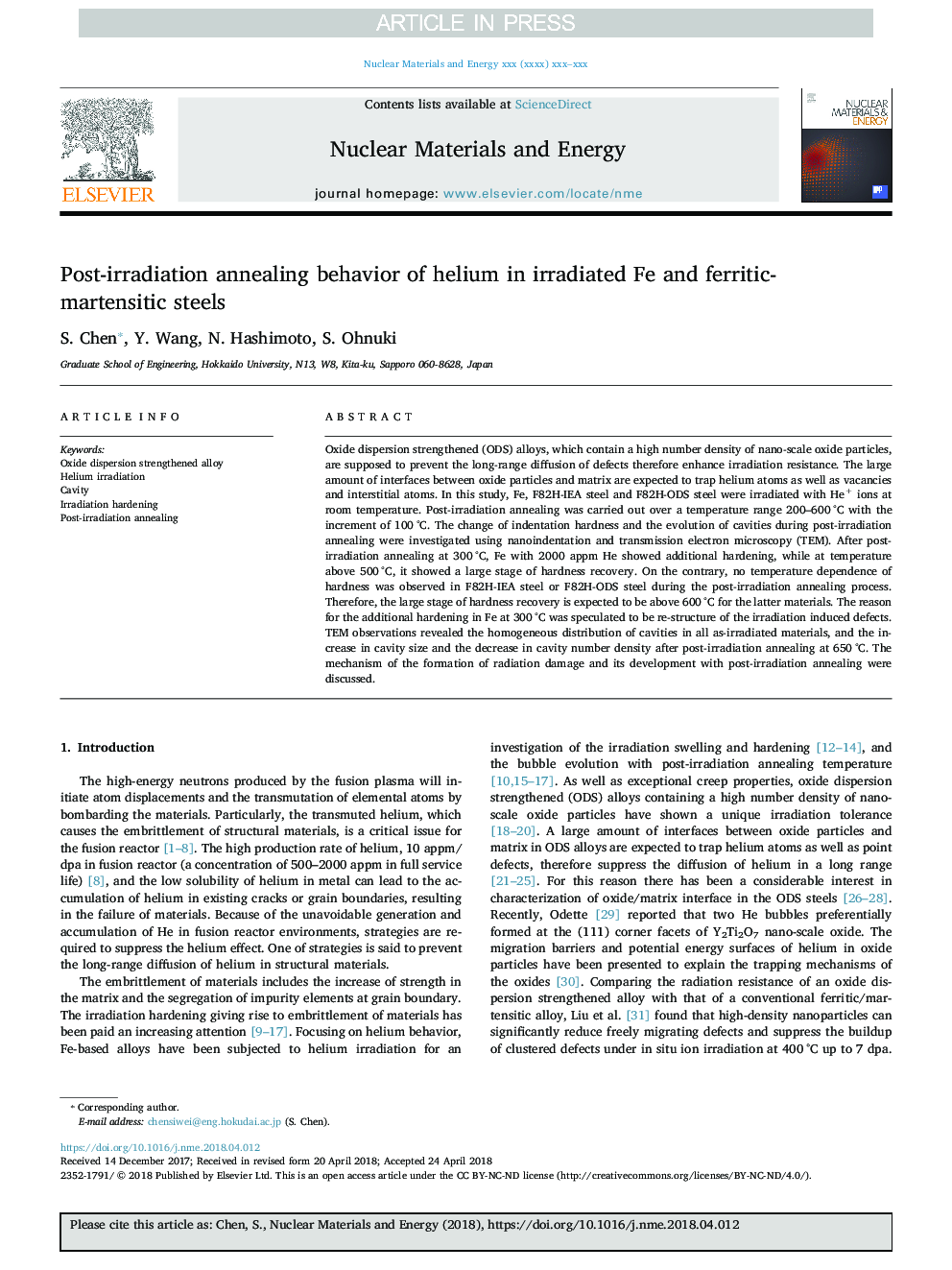| Article ID | Journal | Published Year | Pages | File Type |
|---|---|---|---|---|
| 7987335 | Nuclear Materials and Energy | 2018 | 5 Pages |
Abstract
Oxide dispersion strengthened (ODS) alloys, which contain a high number density of nano-scale oxide particles, are supposed to prevent the long-range diffusion of defects therefore enhance irradiation resistance. The large amount of interfaces between oxide particles and matrix are expected to trap helium atoms as well as vacancies and interstitial atoms. In this study, Fe, F82H-IEA steel and F82H-ODS steel were irradiated with He+ ions at room temperature. Post-irradiation annealing was carried out over a temperature range 200-600â¯Â°C with the increment of 100â¯Â°C. The change of indentation hardness and the evolution of cavities during post-irradiation annealing were investigated using nanoindentation and transmission electron microscopy (TEM). After post-irradiation annealing at 300â¯Â°C, Fe with 2000 appm He showed additional hardening, while at temperature above 500â¯Â°C, it showed a large stage of hardness recovery. On the contrary, no temperature dependence of hardness was observed in F82H-IEA steel or F82H-ODS steel during the post-irradiation annealing process. Therefore, the large stage of hardness recovery is expected to be above 600â¯Â°C for the latter materials. The reason for the additional hardening in Fe at 300â¯Â°C was speculated to be re-structure of the irradiation induced defects. TEM observations revealed the homogeneous distribution of cavities in all as-irradiated materials, and the increase in cavity size and the decrease in cavity number density after post-irradiation annealing at 650â¯Â°C. The mechanism of the formation of radiation damage and its development with post-irradiation annealing were discussed.
Keywords
Related Topics
Physical Sciences and Engineering
Energy
Nuclear Energy and Engineering
Authors
S. Chen, Y. Wang, N. Hashimoto, S. Ohnuki,
